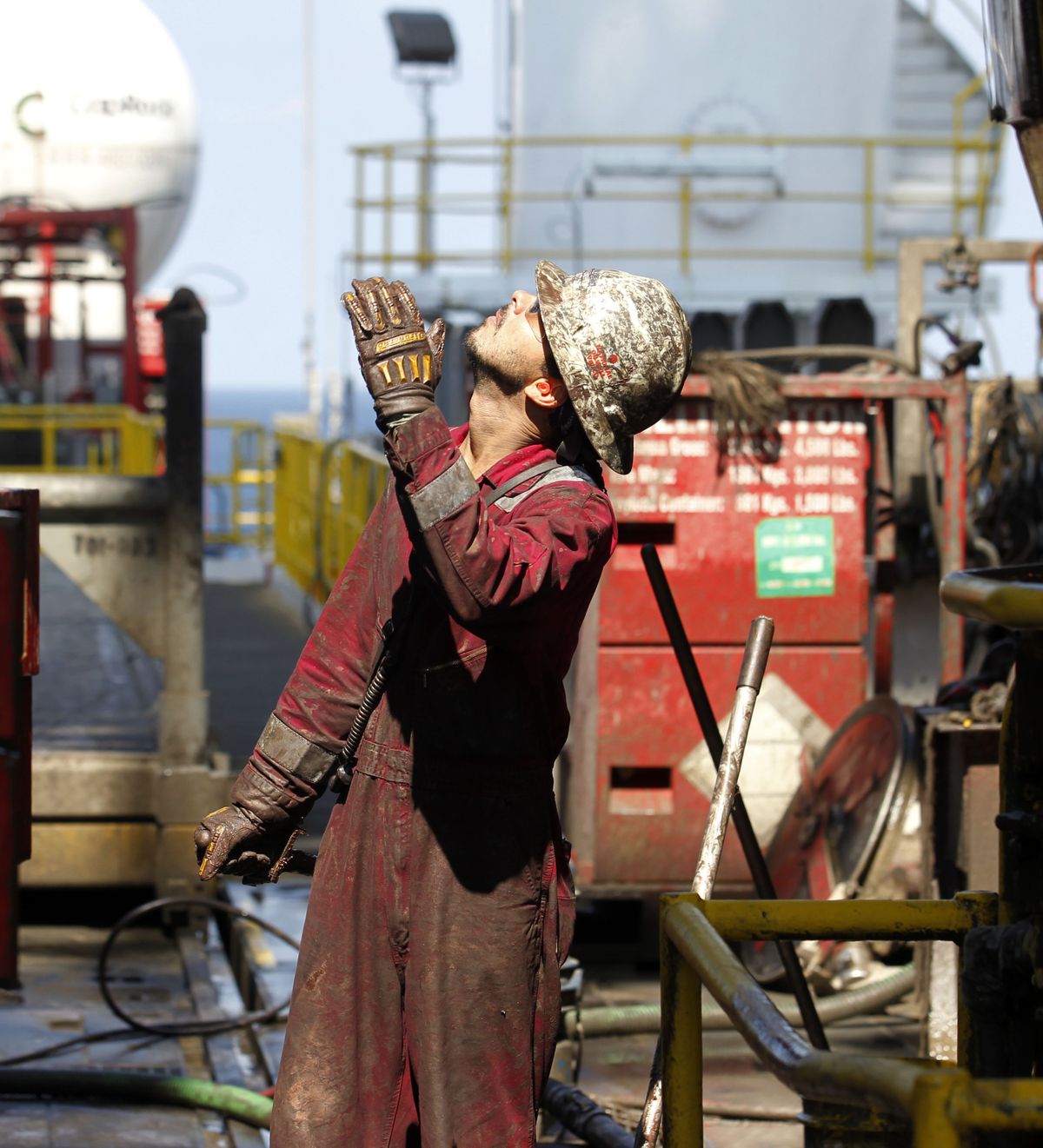Cement sets in Gulf well that wreaked havoc
Only final tests remain; ship atmosphere subdued

ON THE GULF OF MEXICO – The impending death of BP’s blown-out oil well will bring one piece of the catastrophe that began five months ago to an anticlimactic end – after all, the gusher was capped in July.
This, though, is an important milestone for the still-weary residents of the Gulf Coast: an assurance that not so much as a trickle of oil will ever seep from the well that already has ruined so much since the disaster first started. The tragedy began April 20, when an explosion killed 11 workers, sank a drilling rig and led to the worst offshore oil spill in U.S. history.
Crews had already pumped in cement to seal the well from the bottom, and officials said Saturday it had set. Once a pressure and weight test was finished, officials expected to confirm that the well is permanently plugged late Saturday.
People who rely on the Gulf of Mexico and its coastline for their livelihoods, though, know the disaster is far from over. They are left to rebuild amid the businesses destroyed by once-oil-coated shorelines and fishing grounds that were tainted by crude. Even where the seafood is safe, fishermen struggle to sell it to consumers fearful that it’s toxic.
News that the blown-out well would soon be dead brought little comfort to people like Sheryl Lindsay, who owns Orange Beach Weddings, which provides beach ceremonies on Alabama’s coast.
She said she lost about $240,000 in business as nervous brides-to-be canceled their weddings all summer long and even into the remainder of the year. So far, she has only received about $29,000 in BP compensation.
“I’m scared that BP is going to pull out and leave us hanging with nothing,” Lindsay said.
The Gulf well spewed 206 million gallons of oil until it was first stopped in mid-July with a temporary cap. Mud and cement were later pushed down through the top of the well, allowing the cap to be removed. But officials will not declare it dead until it is killed from the bottom.
Even aboard the Development Driller III – the ship that drilled the relief well and allowed crews to pump in the cement for the plug – celebrations were muted.
“It’s kind of bittersweet because we lost 11 men out here,” said Rich Robson, the offshore installation manager on the DDIII vessel. “There isn’t going to be any real celebration. To a lot of people, the water out here is a cemetery.”
The Associated Press was the only media outlet with a print reporter and photographer aboard the ship.
Tim Speirs, BP’s well site leader aboard the ship, told AP there would be no sirens, no lights flashing, once the declaration came. In fact, most of the crew would be asleep.
The DDIII crew began finishing its work Thursday, when the relief well intersected BP’s blown-out well. The cement – which will permanently plug the blown-out well – started flowing Friday. It had hardened by Saturday, leaving only the pressure test.
Until the test was finished, men in red work suits and mud-splattered hardhats were operating heavy hydraulic machines being used to lift the drill pipe back to the deck of the DDIII vessel. Two men sitting in black leather chairs used joysticks to maneuver the massive machines.
The relief well was the 41st successful drilling attempt by John Wright, a contractor who led the team drilling the relief well. Wright, who has never missed his target, told the AP in August that he was looking forward to finishing the well and celebrating with a cigar and a quiet getaway with his wife.
“In my mind, it’s already over. It’s been a long, exhaustive process,” he said Saturday, citing “the media attention, the government involvement, the stress levels, the pressure levels – not just on me, but on the entire team.”